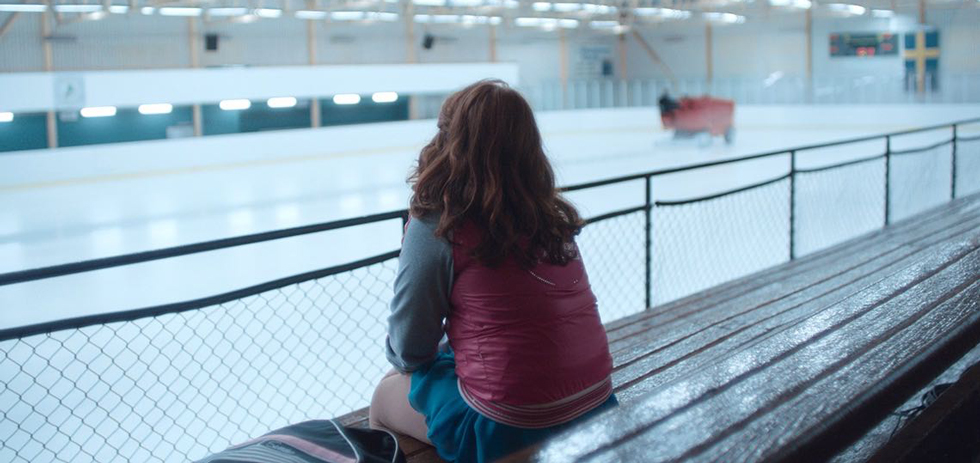
What Sanna Lenken’s debut feature My Skinny Sister manages to communicate in its study of girlhood and self-image is the sheer volume of influences on adolescents’ understanding of appearance and worthiness. The sisters at the heart of its story, Stella (Rebecka Josephson) and the older, precocious and adult Katja (Amy Deasismont), are bombarded with statements about body appearance and size, food, exercise, and romance, from TV images to schoolyard gossip. When Stella discovers that her older sister, rather than the infallible role model she has believed in, actually has issues which run deeper than Stella’s own, she is forced from the cocoon of her preteen years to deal with more mature concerns. The main strength of My Skinny Sister is its nuance in depicting how Katja’s eating disorder can slip so easily under the radar of her family – avoiding the usual clichés of youth and sisterhood, the film sidesteps any high-handed moralism or reliance on trauma or neglect to instead deal with the insidious nature of body image issues for girls. While at times slight and visually unstimulating, the film still succeeds in approaching a taboo with maturity and tact.
Much of the weight of the film is shouldered by its two young leads, particularly Josephson, who appears in more or less every frame.1 Red haired, chubby in a common preteen way, and balancing precariously between doe-eyed childishness and teenaged stubbornness, Stella is a convincing cipher for younger siblings everywhere. Deasismont, too, acquits herself well, especially considering her more adult role. As Katja, a promising figure skater, becomes more and more consumed by imagined relationships between hunger, exercise, and success, Deasismont conveys the venality and fragility of a young woman out of her emotional depth with a natural and believable style. The girls’ parents are wisely kept out of the fray for the most part, allowing Lenken to portray them as confused and somewhat clueless victims of the pressures surrounding modern girls as much as their daughters are. Their father Lasse (Henrik Norlén) is actually a standout among the supporting cast despite his few appearances, thankfully devoid of either the abusive or impotent natures so often grafted onto the dads of teens with problems.
The film’s visual style is more of a mixed bag in terms of effectiveness. The camerawork throughout sticks doggedly to a naturalist style which is perfect for expressing the mundanity – and supposed lack of turmoil – inherent in the very middle-class Sweden where it takes place. The observational feeling of scenes where Stella hangs out with friends discovering beer and metal music conveys the parallel lines to her emotional development, dealing with the everyday drama of being young as well as the tougher problems she needs to confront. The extensive use of washed-out colour and paucity of stylisation does, though, sometimes feel like a missed opportunity, especially when the emphasis on the body in motion that is such a part of figure skating is shot with such detachment. A few moments juxtaposing the phases of the family’s struggles with a varying colour palette, rather than a style tonally consistent throughout, would not go amiss either.
A tight three-act structure – Stella and Katja’s normal life, discovery of the older sister’s anorexia, and their family’s confrontation of the problems – means that the film’s ninety minutes are probably all it could bear. The absence of much in the way of subplots, though, feels appropriate for a piece looking to deal with such personal, intimate drama. In the final analysis, honing in on the sisters at the expense of a broader picture of the film’s social atmosphere is effective, though. With convincing performances from Josephson and Deasismont buoying the narrative, and a naturalism that lends its more melodramatic parts an emotional resonance, My Skinny Sister is ultimately a tender and intelligent work about youth, girlhood, and family.
